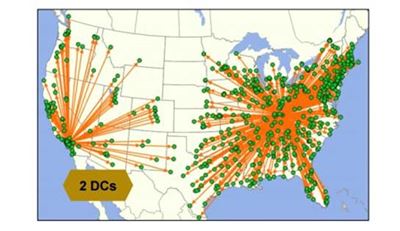The Great Balancing Act - Distribution Network Configuration
- share

Senior executives across all industries share two common goals: Increasing Shareholder Value and Delivering Bottom Line Results.
Senior executives across all industries share two common goals: Increasing Shareholder Value and Delivering Bottom Line Results. A proven approach to reducing the overall supply chain “cost to service” is the optimal deployment of distribution network assets. This is done by understanding the true cost of the current distribution network and achieving the proper balance of the desired service level and the most optimal cost.
So what really is Distribution Networking Modeling and what value does it offer to undertake such an initiative?
Distribution Network Modeling is the process of evaluating a current or potential distribution network infrastructure to determine the trade-off between service level performance and total cost associated with providing a given service level. Ultimately it helps to answer the questions of how many distribution centers should be operating, where they should be located and what functions they should have. It also determines the cost to operate alternative network configurations at varying levels of service performance.
The primary reason is to make the best use of physical and human assets while meeting ever-increasing customer service requirements. This modeling is typically done when launching a new business, when adapting to changes in business conditions such as growth and new product introduction, or when reacting to industry pressures which cause a shift in the cost curve.
What cost factors need to be taken into consideration? Transportation is one key cost driver which should be monitored and modeled on a routine basis to understand the dynamics of a given network infrastructure. Other cost drivers include: people, equipment, space, operating expenses, inventory carrying charges, systems and technology, tax considerations and administration.
When these factors and the associated customer service level objectives are fully understood, they can be systematically modeled to understand the impact to cost and service when making changes to the distribution network design.
The optimal configuration of a company’s product distribution network will strike a balance between the logistics and delivery costs required to achieve and maintain a targeted customer service level. Done correctly, an agile and resilient distribution network can be a strategic competitive advantage.
One way to evaluate this cost / service trade-off is to create a distribution network model based upon the reality of the current network scenarios to understand how changing network variables impact logistics cost and the ability to service customers. The basis for the model is an accurate depiction of the current network structure complete with fully loaded facility costs, geographic locations, processing capabilities, customer demand data, order profiles and service level performance.


